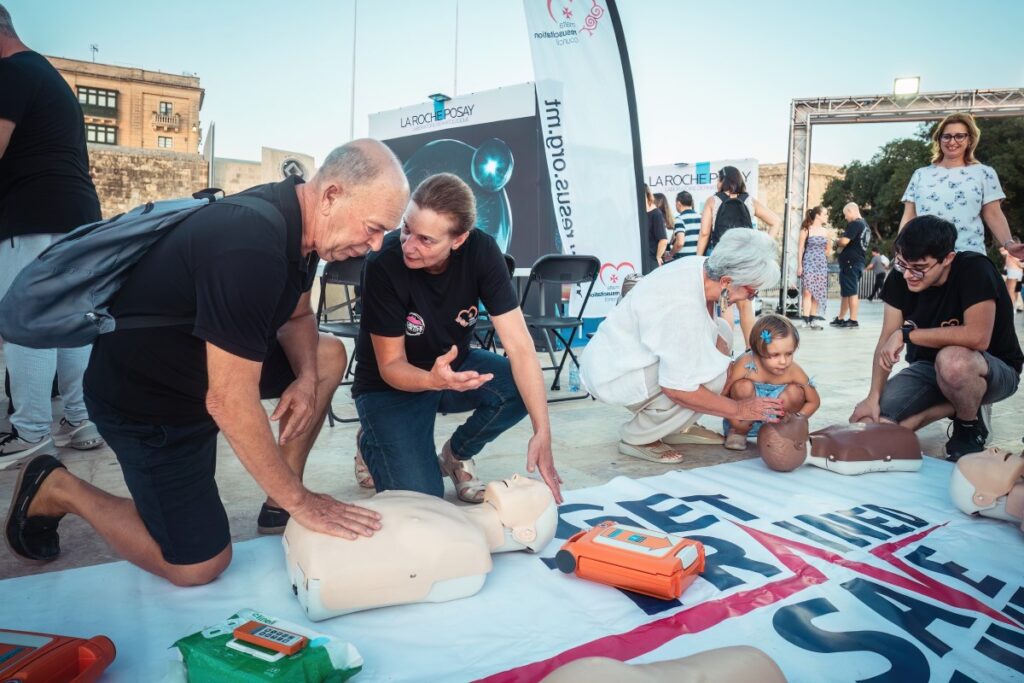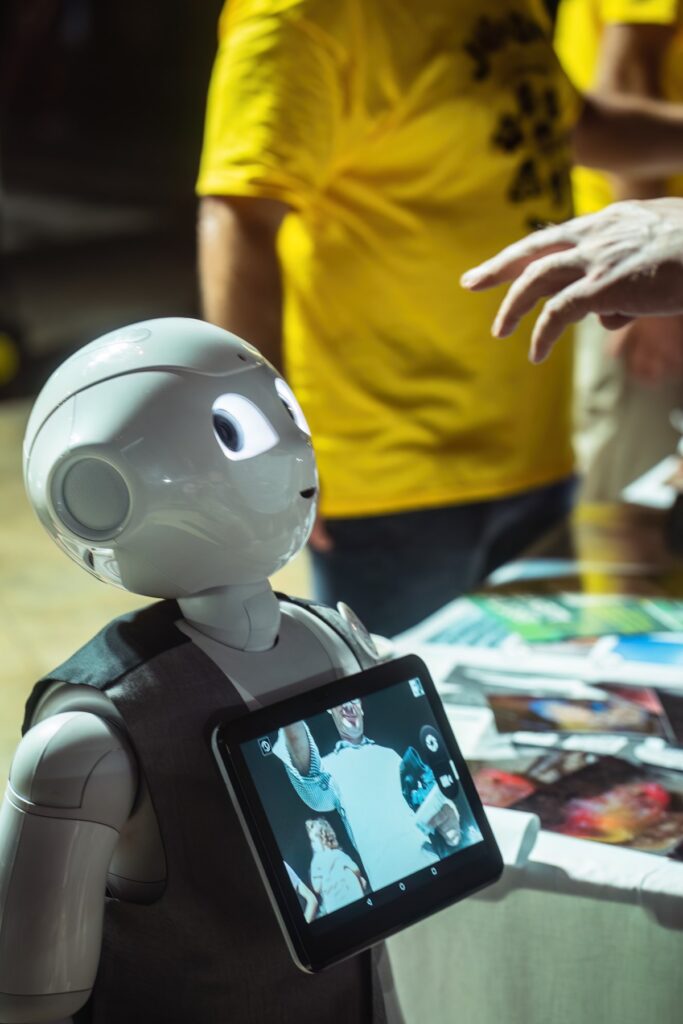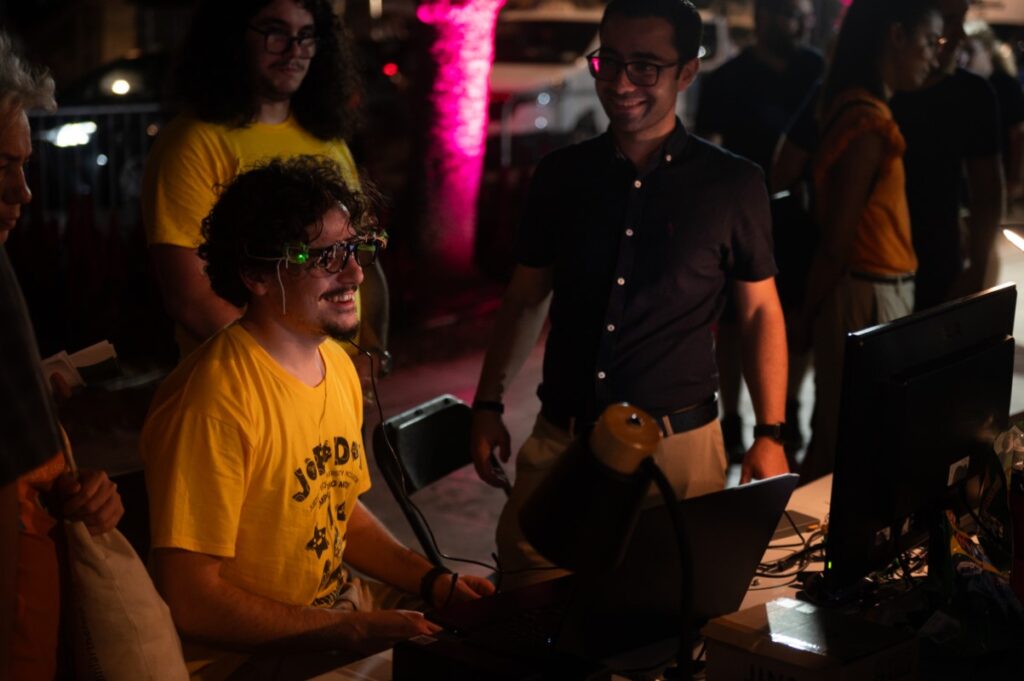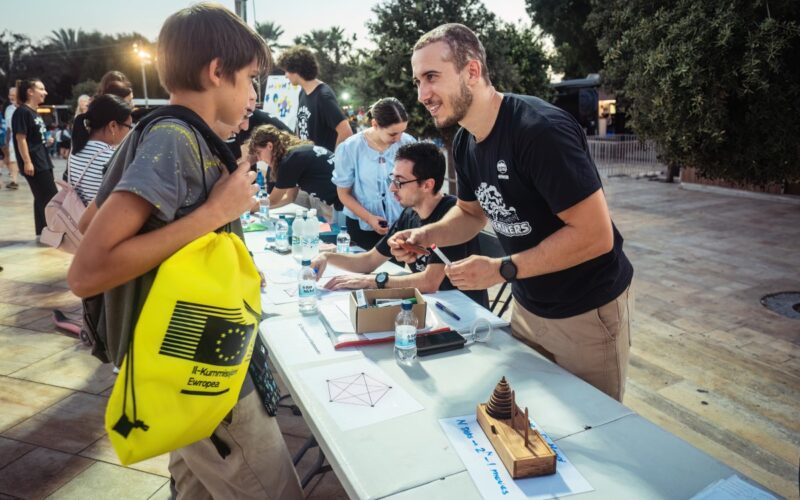Valletta is transforming into a hub of scientific discovery this month as the Science in the City Festival returns with its most diverse line-up yet. At the heart of this year’s festival is the theme of ‘Past Forward!’, where artists, researchers and the community have passionately put together stands that encapsulate the theme. Here are a few to get you excited:
Step back into history with a powerful art installation by artist Pep Herrera in collaboration with Emanuel Buttigieg and Joan Abela, who uncover Malta’s overlooked legacy of slavery through a beautifully layered mural that changes as viewers move around it.
Alternatively, explore the history of art, from prehistoric cave paintings to modern digital work, and create your very own artwork to take home with The History of Art and Fine Arts Student Association.
And why not dive deeper to explore what Heritage Malta has to offer? Embark on a unique underwater journey through 360-degree footage captured by Heritage Malta divers, offering an up-close look at the shipwrecks scattered along Malta’s seabed. These digital reconstructions reveal stories of lost vessels and maritime trade, helping document and protect our submerged heritage. Then see how scientists study historic objects under the microscope, from analysing layers of paint to identifying insects trapped in time, to find what they can tell us about the people who made them.
But, there’s more than just the ocean depths! An interactive exhibit on the Triton Fountain by the Ministry for Transport, Infrastructure and Public Works will allow visitors to 3D print personalised items inspired by this iconic structure and experience a rare guided tour into the fountains’ plant room.

Feeling the ground shake with excitement yet? Matthew Agius from the Seismic Monitoring and Research Group collaborates with the Department of Civil Protection to demonstrate earthquake monitoring and emergency response, featuring rare materials from the 1908 Messina earthquake.
Building on these solid foundations, why not visit the Construction Materials Engineering group from the University of Malta, where they will be demonstrating how the industry is evolving to address environmental challenges, showcasing technologies that transform construction waste into new materials and print structures with eco-friendly concrete.
Do you need a doctor after all the shakes? Why not stop by the Malta Medical Students’ Association stand, where visitors can discover the history of medicine.
Additionally, the students and educators of Junior College have a stand that will allow participants to design their own species and learn how kitchen scales connect to global mining and why AI is just the latest stop on a long road that started with punched cards.
Game over? Not even close!

Experience Night Parade of 100 Demons, an interactive musical game based on Japanese folklore, created by Costantino Oliva in partnership with Vibe FM. Control four mythical yokai characters with distinct musical abilities in this unique blend of improvisation and game design. Previously featured at Japan’s BitSummit and Kyoto’s ArtBit Exhibition, this University of Malta and Ritsumeikan University collaboration invites you to create your own musical folklore experience. From virtual musicianship to scientific discovery, the Institute of Digital Games demonstrates how play pushes scientific boundaries − games have helped uncover enzyme structures critical for anti-AIDS drugs and inspired breakthroughs in AI.
Speaking of AI, you can experience it firsthand at Dragos Silion’s installation, where you will see yourself transformed through AI, challenging your very notions of identity in our technological age.
All this talk of AI must make you want to return to nature, right? Luckily, we have the Biodiversity and Ecology Research Group, whose stand aims to transform misconceptions about Malta’s native animals, such as the leopard snake.
Or head over to the GENE campaign stand, which invites visitors to discover Malta’s rich native and cultivated plant heritage through its interactive exhibit. Festival-goers can learn about the vital work of collecting, storing and protecting seeds for future generations. This stand offers a glimpse into plant conservation science and the critical importance of seed diversity, and the many ways everyday citizens can contribute to preserving Malta’s natural heritage.
The Dwejra Lines Project offers insight into how we can creatively protect our environment and JustNature brings green spaces to urban environments.

Before you leave, stop by and see ‘The Big Toilet Project’ with UCL Plastic Waste Innovation Hub, a stand co-created by Aarathi Prasad, PhD, and artist Luke Demarest. Their stand reveals the shocking reality of discarded disposable nappies. Through an interactive installation combining art and technology, visitors can visualise this mounting waste problem and help develop solutions for reducing plastic pollution from nappies.
These are only a handful of the hundred or so stands that will be at this year’s Science in the City Festival 2025. Whether you’re interested in history, technology, the arts or nature, there’s something for everyone at this year’s festival. Visit scienceinthecity.org.mt for the full programme and to plan your visit.
This article was provided by the Science in the City team. The main Science in the City festival is being held on September 26 and 27 in Triton Square and Sala San Duminku, Valletta. Pre-festival activities are being held until September 25. Visit the Science in the City social media platforms or website for more information about the events. For free event booking, click here.
For more science-related stories, click here. For more Child articles, follow this link.










